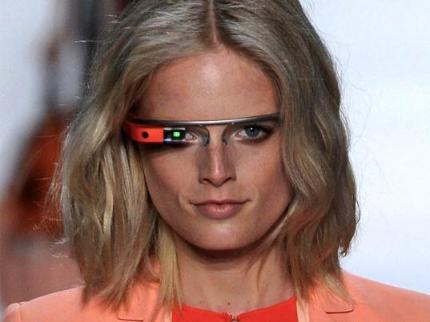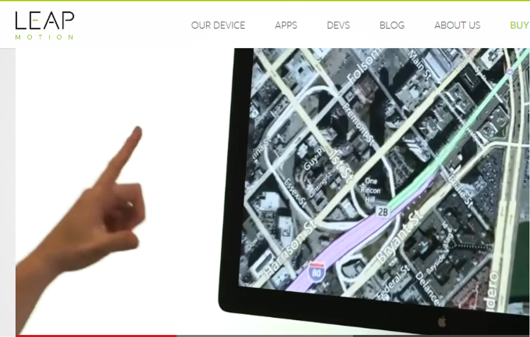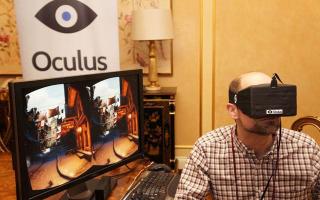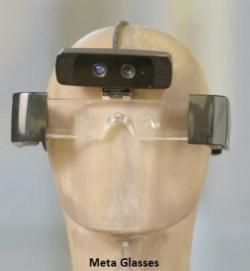Four Tech Advances You Should Know About Now

1. LeapMotion Touch-Free Controller
The LeapMotion Controller was originally developed to make 3D modeling as easy on the computer as it is by hand. It comes down to having an input device that can recognize the third dimension. While many of us do not often need to input 3D movements on our computers on a day-to-day basis, this same technology is used to provide a "touch-free" touchscreen and end the snail trail" of goop that collects on touch screens and provide additional benefits. Essentially, the LeapMotion Controller tracks the movements of your hands and fingers in three-dimensional space. You are able to do anything you could do on a touchscreen (and then some) without physically touching anything. You move your hands and fingers in the air and the computer responds just as it would if you were swiping, touching and tapping on a normal touchscreen. Leap Motion tracks your hand's position, angle, orientation and rotation—in real time, with no delays. The device will be released on July 29th to work with Windows 7, Windows 8 and the Mac 10.6 and above operating systems. With a price point of $80, this could prove to be a popular piece of hardware—especially when the company releases its "Airspace," which will be a way for users to easily find and download applications that are designed to take full advantage of the LeapMotion system and the three-dimensional "anti-touch touchscreen". Straight out of the box, LeapMotion can accomplish anything you can do with a standard touch system. Highland Capital Partners has established The Leap Fund, a $25 million investment initiative focused on entrepreneurs that use Leap Motion technology to develop breakthrough experiences. They're looking for ideas that can grow into impactful businesses across various industries - everything from killer apps to embedding Leap Motion's technology into other hardware/software to unique businesses. Disney, The Weather Channel and Corel, among others, are currently developing applications. The development team wants to integrate the technology to work with the most popular mobile devices. LeapMotion could prove to be useful to everyday users, those with the need for 3D manipulation as well as gamers who want to experience every dimension of the games they play. Several other motion detection patents have been filed for interactive TV advertising applications. One such TV app is for a burger that asks the user to throw an imaginary pickle onto it to continue viewing their movie, and another requires the user to stand up and shout "McDonalds" while raising their hands to continue. It's unlikely these particular applications will see the light of day or primetime, but home electronics manufacturers are working to integrate smartphone and tablet computer technology advances into the next generation of smart TVs, including more active motion and voice detection.
movements of your hands and fingers in three-dimensional space. You are able to do anything you could do on a touchscreen (and then some) without physically touching anything. You move your hands and fingers in the air and the computer responds just as it would if you were swiping, touching and tapping on a normal touchscreen. Leap Motion tracks your hand's position, angle, orientation and rotation—in real time, with no delays. The device will be released on July 29th to work with Windows 7, Windows 8 and the Mac 10.6 and above operating systems. With a price point of $80, this could prove to be a popular piece of hardware—especially when the company releases its "Airspace," which will be a way for users to easily find and download applications that are designed to take full advantage of the LeapMotion system and the three-dimensional "anti-touch touchscreen". Straight out of the box, LeapMotion can accomplish anything you can do with a standard touch system. Highland Capital Partners has established The Leap Fund, a $25 million investment initiative focused on entrepreneurs that use Leap Motion technology to develop breakthrough experiences. They're looking for ideas that can grow into impactful businesses across various industries - everything from killer apps to embedding Leap Motion's technology into other hardware/software to unique businesses. Disney, The Weather Channel and Corel, among others, are currently developing applications. The development team wants to integrate the technology to work with the most popular mobile devices. LeapMotion could prove to be useful to everyday users, those with the need for 3D manipulation as well as gamers who want to experience every dimension of the games they play. Several other motion detection patents have been filed for interactive TV advertising applications. One such TV app is for a burger that asks the user to throw an imaginary pickle onto it to continue viewing their movie, and another requires the user to stand up and shout "McDonalds" while raising their hands to continue. It's unlikely these particular applications will see the light of day or primetime, but home electronics manufacturers are working to integrate smartphone and tablet computer technology advances into the next generation of smart TVs, including more active motion and voice detection.
2. Eye Tribe- Control Your Smart Phone or Tablet with Your Eyes
Every few years there is a different controller that revolutionizes the mobile device industry. It started with touch screen control and then voice control. Now Eye Tribe will offer eye control over your phone. There are a few aspects of this upcoming technology you should know about. Eye Tribe is a mass market eye tracking technology that will allow you to control various aspects of your phone with your eyes. It will also combine other features already available on the phone, such as touch, tilt and the keys to give the best overall experience. It differs from current face and eye detectors on the market as it offers sub millimeter pupil tracking. This will allow the eye detection software to be just as precise as the fingertip is. As described at the Eye Tribe site, "A smart device understands what you are trying to do and assists you doing so. Since it already knows what you are looking at, interaction can be made easier and faster. While reading a page it automatically scrolls down as you reach the bottom. When you are taking a photo the area you are looking at is instantly focused. At the lock screen you simply unlock your device by looking at a series of predefined points and then the device logs in. Now no one will see your pin code."
tracking technology that will allow you to control various aspects of your phone with your eyes. It will also combine other features already available on the phone, such as touch, tilt and the keys to give the best overall experience. It differs from current face and eye detectors on the market as it offers sub millimeter pupil tracking. This will allow the eye detection software to be just as precise as the fingertip is. As described at the Eye Tribe site, "A smart device understands what you are trying to do and assists you doing so. Since it already knows what you are looking at, interaction can be made easier and faster. While reading a page it automatically scrolls down as you reach the bottom. When you are taking a photo the area you are looking at is instantly focused. At the lock screen you simply unlock your device by looking at a series of predefined points and then the device logs in. Now no one will see your pin code."
While the Samsung Galaxy S4 has the smart pause feature that will recognize when you are not looking at the screen, this software will take eye control to a whole new level, including login in with your eyes, app control and other phone functions. This software was first unveiled at DEMO Mobile 2013 where people could get a first-hand look at how the software would work on a Windows 8 device. People were able to play the game Fruit Ninja, which usually requires touch, simply by moving their eyes. Again from the site, "With eye tracking technology game designers can create amazing experiences. The game engine knows what the player has already seen and where he is currently looking, enabling a new wave of exciting games and truly personalized gameplay. Aim with your eyes and keep your finger on the trigger, nothing moves faster than the eye." The software is designed for Android phones, though not all of them will be able to use the technology as there are some hardware requirements such as infrared sensors. Just last month, the software became available to smartphone and tablet developers who are working on specifically eye controlled applications and games. Advertising applications are also being developed, especially for measurement, since Eye Tribe can help advertisers gain a better understanding of what people are looking at on a more micro scale than currently available. The company says "Collecting visual attention information allows designers and researchers to evaluate user engagement of advertisement, applications, websites, and games. Using infrared technology, our advanced algorithms can accurately track the position of the pupil in real time. This means it is possible to tell where someone is looking on a screen with accuracy comparable to the size of your fingertip. The technology can be seamlessly integrated into the next generation of smartphones and tablets with small modifications to the standard hardware components." They provide a cloud-based platform for administering and analyzing user behavior with multiple users.
Eye Tribe was started by four PhD students from IT University of Copenhagen in 2011, though it was originally known as SensEye. The company has received seed funding from a number of different sources, including $1 million from European investors and $4.4 Million from the Danish government. They have now expanded to 12 full time employees who focus on this software as well as apps specifically designed for eye control. Their hope is that by having third-party developers involved, it will be integrated into major apps and mobile devices. Hardware upgrades cost only $1 on average to add, so the capability can profitably be incorporated in future device upgrades. According to the projections from the company, there will be 1.1 billion devices with Eye Tribe on them within the next two years.
Samsung has recently released mobile devices that track where a user's eyes are looking so that the user can turn the page or scroll down the device automatically, and there are companies developing eye capture that can be used on any device, connected via USB. Another company that has filed a patent, Sensye, is moving forward aggressively with eye capture technology with plans to roll it out to consumer markets soon. And, as noted above, today's smartphone technology will be integrated into tomorrow's smart TVs.
3. Oculus Rift- Changing the Gamer's World
There have been many wearable gaming headset devices that have tried to achieve a fully immersive virtual reality experience, dating back to the Nintendo Virtual Boy. They all had serious flaws that prevented market adoption. The introduction of the Oculus Rift is changing all of this. Though the first model used a 5.6" screen, the newer designs utilize a 7" screen with two eye holes. Though slightly bulky, it's lightweight enough to avoid neck strain. In fact the entire device weighs only about a pound, which is significantly lighter than any previous gaming headset. The device wraps around the head and allows the user to even see the game from their peripheral vision. According to Brendan Iribe, the CEO of Oculus VR, the great peripheral vision is what tricks the brain into believing the game is reality. Most importantly, any game can be transformed to 3D with Oculus Rift, even games like Portal 2, which were not developed for 3D. One person experimenting with the unit said that the vines on the wall were the only aspect of Portal 2 that did not look 3D. Along with this, you can look around a room simply by moving your head rather than having to use controls, adding to the authenticity of the experience. An accompanying controller is available and for a more immersive experience, the Razor Hydra add-on offers the ability to use your hands as joysticks. This headset can also be used for watching TV, creating an immersive experience for TV shows, sporting events and advertising. It can even be used by advertisers for more effective commercial engagement and product demonstrations. While many pundits are writing off 3D video, the growing popularity of gaming (with more than 80% of all those under 25 years old actively playing mobile and console games) Oculus Rift will offer marketers new opportunities to reach consumers in a completely immersive virtual environment they can control.
which is significantly lighter than any previous gaming headset. The device wraps around the head and allows the user to even see the game from their peripheral vision. According to Brendan Iribe, the CEO of Oculus VR, the great peripheral vision is what tricks the brain into believing the game is reality. Most importantly, any game can be transformed to 3D with Oculus Rift, even games like Portal 2, which were not developed for 3D. One person experimenting with the unit said that the vines on the wall were the only aspect of Portal 2 that did not look 3D. Along with this, you can look around a room simply by moving your head rather than having to use controls, adding to the authenticity of the experience. An accompanying controller is available and for a more immersive experience, the Razor Hydra add-on offers the ability to use your hands as joysticks. This headset can also be used for watching TV, creating an immersive experience for TV shows, sporting events and advertising. It can even be used by advertisers for more effective commercial engagement and product demonstrations. While many pundits are writing off 3D video, the growing popularity of gaming (with more than 80% of all those under 25 years old actively playing mobile and console games) Oculus Rift will offer marketers new opportunities to reach consumers in a completely immersive virtual environment they can control.
Researcher Steve Lavelle writes at the Oculus Rift blog, "We have all learned that latency is the bane of virtual reality. Because your head freely rotates, presenting the correct image to your eyes is like firing a bullet at a moving target. The target is "sighted" by sensor fusion software, which provides the direction you are currently looking. Latency is the time it takes between your head moving to a new orientation and the correct image arriving on your retinas. In real, old-fashioned reality, the latency is effectively zero. In VR, latency is widely recognized as a key source of disorientation and disbelief (the brain cannot be fooled)." Lavelle argues "that simple prediction techniques can reduce latency so much that it is no longer the main problem. Simply present the image that corresponds to where the head is going to be, rather than where it was."
While the main group that is interested in this product is the gaming community, there are other applications. The Interactive Media Systems Group at Vienna University of Technology uses the virtual reality to help train amputees how to function with their new prosthetics. Surgeon Simulator 2013 has been converted from PC use to the Oculus with much success. Other applications include law enforcement training to driving instruction.
While you will not be able to wear glasses with the device, it will have the option to change the distance to accommodate for near sighted and far sighted individuals. There has not been a lot of information given on the extent to which this will work, just that they are trying to make it usable for those without perfect vision. However, those with severe astigmatism may not be able to use the device as it will not give complete correction. It is also interesting to note that the unit will not cause eye strain.
Currently the only option to purchase Oculus Rift is the developer's kit, which costs $300. The release date for the consumer model has yet to be set, though most speculate that it will be available in 2014. While active gamers can buy the developer kit, the average consumer will want to wait. The consumer edition will feature improved immersion, comfort and viewing experience.
Google Glass is a radically different augmented reality smartphone device that creates a display over a user's field of vision, and there are also several other devices being worked on. Recon Jetis intended for use by athlete to enhance performances. Meta Glasseshas raised nearly $200,000 on Kickstarter and has introduced a $750 developer's kit. Inspired by the interfaces in films like Iron Man, Avatar and Minority Report, the meta 1 Developer Kit delivers a natural interface between the virtual world and reality.
4. Fiber Optic Internet – Speeding Up High Speed
Fiber optic Internet allows users to get speeds that are much faster than regular broadband connections. Until recently, fiber optic Internet connections have only been available to people near large data centers or in certain parts of major cities. Google Fiber is offering fiber optic Internet in smaller cities, forcing established ISPs to build out the capability at price points comparable to current DSL and cable fees. Since fiber optic speeds can be up to 50x faster than DSL speeds, consumers are going to be able to take in a lot more content without having to deal with buffering time, choppy video or exceeding bandwidth caps. This is great news for video content producers, especially those creating in hi-def and 3-D. You Tube will be a primary beneficiary, which is one reason why Google is making the investment. Streaming TV services such as Netflix, Hulu and HBO Go will benefit as more people purchase and connect Smart TVs to stream content straight from the internet. This expansion has major implications for media companies because more content is going to be served to more people. According to Fiber Optic Internet, "Whilst the government makes plans on how to attribute space, time, funds and permissions to each of the companies looking to serve you, many are taking it upon themselves to upgrade the lines to your home - although they seem to be making more effort with wireless and mobile broadband. Following the trend or creating it? Fiber optics is the next generation of speed but always pay attention to whether the company touting its products is actually offering you fiber optics to your door, or simply to your local telephone exchange box. As the speed differences can be large. Verizon advertising states that it is the only provider of to-the-home fiber optic internet services. High speed internet access adverts always show really high figures. But with most of us using WiFi connections through routers in our home, you could be paying for more broadband speed than you could ever actually use." According to Engadget, "The European Commission and Japan have just announced a series of research projects to help speed up replacement of their soon-to-be-antiquated internet backbones. One of them, the STRAUSS project, will be shooting for 100Gbps fiber optic speeds -- a whopping 5,000-fold gain over current Euro data rates. It'd do so by combining new optical packet switching technology, optical transceivers and other hardware with updated controlling software. The next step will be testing it on a large scale at sites across the EU and Japan." Large advertisers will need to reconfigure media plans to adjust for the growing embrace of on-demand media consumption as speeds accelerate on mobile, desktop and large screen TV devices.
If you are receiving this report, you are a registered member to Jack Myers Media Business Network or are receiving it as part of a registered corporate membership. As a member, Jack responds personally to your e-mails, requests and comments. He is available to speak at your company events. In addition to Jack Myers Media Business Reports, your membership underwrites MediaBizBloggers.com, Women in Media Mentoring Initiative, Jack Myers Wall St. Report, Jack Myers Video Media Report, plus our exclusive industry economic forecasts, trend forecasts and corporate performance research. Re-distribution in any form, except among approved individuals within your company, is prohibited. As a member you have full access to all archives and reports at www.jackmyers.com. If you require your ID and password, contact maryann@jackmyers.com


